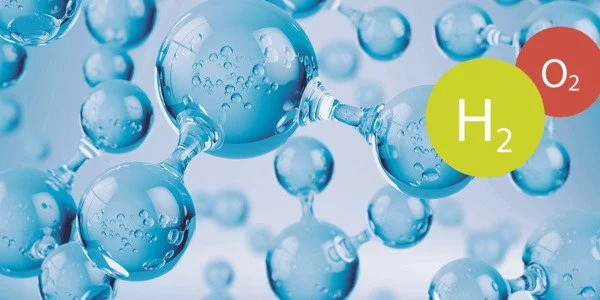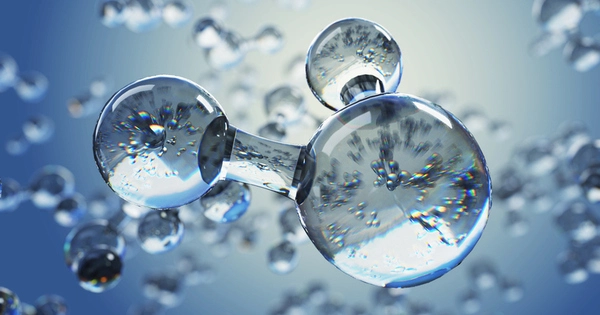Water splitting, which involves using electrical energy to split water molecules into hydrogen and oxygen, is an attractive method for producing hydrogen gas, which can be used as a clean and renewable fuel. However, one of the challenges of water splitting is that it typically requires a relatively high voltage to drive the reaction, which can be cost-prohibitive and inefficient.
A new method for introducing efficient water splitting at low voltage could potentially help to overcome this challenge. This method might involve the use of new materials or catalysts that can facilitate the reaction at lower voltages, or it could involve modifications to the design of the water-splitting system itself. By reducing the voltage required for water splitting, it may be possible to make the process more efficient and cost-effective, potentially paving the way for the wider adoption of hydrogen as a clean energy source.
Metal oxides are a promising photoelectrochemical (PEC) water-splitting catalyst for producing hydrogen as an alternative energy source. Their effectiveness, however, is limited at low voltage. A team of researchers led by City University of Hong Kong (CityU), Australia, and Germany successfully mediated the poor charge carrier transport at low voltage by adding phosphorus to a metal oxide catalyst, reducing energy losses during water splitting. The findings suggest a possible path to carbon neutrality.
Professor Ng Yun-hau of CityU’s School of Energy and Environment (SEE) and researchers from Australia and Germany co-led the study. Their findings, titled “Low-bias photoelectrochemical water splitting via mediating trap states and small polaron hopping,” were published in the scientific journal Nature Communications.
We hope that the mechanistic understanding of BiVO4 property enhancement will provide key insights into trap state passivation and polaron hopping for many photoactive metal oxides, and, more importantly, will offer a potential option for efficient hydrogen production to help achieve carbon neutrality.
Professor Ng
Bismuth vanadate (BiVO4) is a metal oxide semiconductor that responds to both ultraviolet and visible light and is regarded as a top-performing photocatalyst for PEC water splitting. “The PEC water-splitting process produces hydrogen and oxygen from water by using sunlight and specialized semiconductors as photocatalysts, such as BiVO4. The photocatalysts directly dissociate water molecules into hydrogen and oxygen using light energy and a small voltage supply” Dr. Ng, a PEC researcher, explained.
“However, if the voltage supply is too low, a large fraction of the photo-excited charge carriers cannot be extracted efficiently, resulting in energy loss and a reduction in water-splitting efficiency. This poor charge transport is caused primarily by charge carrier trap states and small polaron formation.”

Native defects and polaron formation hinder charge carrier transport
With solar energy, electrons in the semiconductor are excited and can bounce up and across the band gap from the valence band to the conduction band, causing an electric current to flow. However, the semiconductor’s native defects introduce “trap states,” which trap the photo-induced electrons and positively charged holes until they recombine, preventing them from freely moving to become an electric current.
Furthermore, when an electron is excited within a semiconductor, its charge can cause lattice expansion, confining the electron within the lattice unit and forming a small polaron, which can be regarded as a deep trap state that strongly traps the electron. Hoping from one location to another requires thermal vibration energy (also known as polaron hopping activation energy). Hence, the small polaron formation has a detrimental effect on charge mobility, which is common in transition metal oxides.
The research team took on this challenge to find ways to improve charge mobility. They discovered that by modifying the BiVO4 photoanodes with phosphorus doping, the charge mobility is 2.8 times greater than the pristine one. This also increased charge separation efficiency by up to 80% at 0.6V, which is about 1.43 times stronger than the pristine one, and up to 99% at 1.0V.
Dr. Wu Hao, the first author of the paper, then-postdoc in Professor Ng’s group, and now an Assistant Professor at the Macao Institute of Materials Science and Engineering at Macau University of Science and Technology, shared one of the highlights of the study: “We discovered that the polaron hopping activation barriers of BiVO4 photoanodes were reduced upon incorporating phosphorus. This was proven by our combined theoretical and experimental studies.”
Synergistic effects of phosphorus doping
The team’s experiments and measurements also confirm that phosphorus doping passivated the trap states that are intrinsically formed on the BiVO4 surface, thereby increasing the open-circuit photovoltage for splitting water molecules.
They demonstrated that by concurrently mediating the polaron hopping barrier and trap state, they improved charge transport in phosphorus-doped BiVO4, introducing efficient PEC water splitting for hydrogen production at low voltage. Because of the synergistic effects, the phosphorus-doped BiVO4 demonstrated a record-high photon-to-current conversion efficiency of 2.21% at 0.6V.
“We hope that the mechanistic understanding of BiVO4 property enhancement will provide key insights into trap state passivation and polaron hopping for many photoactive metal oxides, and, more importantly, will offer a potential option for efficient hydrogen production to help achieve carbon neutrality,” said Professor Ng.





